Reading Time: 7 minutes
Walleye fishing on the Columbia River is never just a casual cast into the water. Here, you sign up for an adventure in one of the most dynamic river systems in North America. The mighty Columbia River is a playground for anyone serious about their Walleye fishing game.
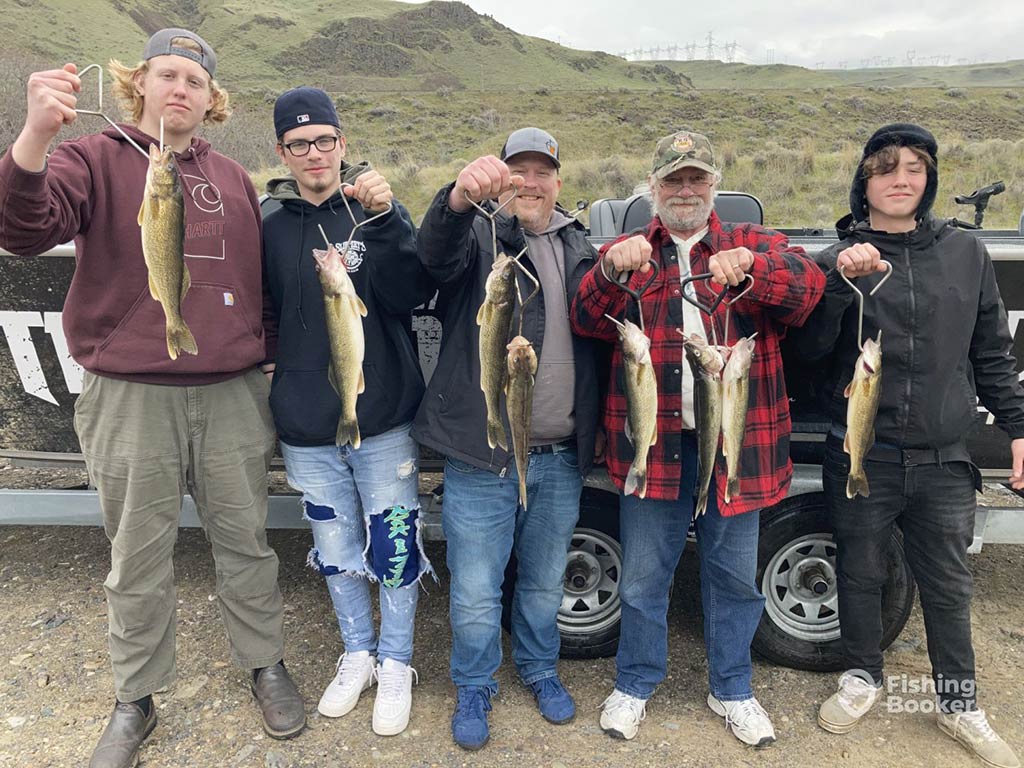
Photo courtesy of Oregon Trophy Walleye
Stretching over 1,200 miles, the Columbia River winds its way through varied landscapes, offering plenty of opportunities to make your fishing dreams come true. The entire water system is a haven for Walleye, allowing both seasoned and novice anglers to test their skills. Between its swift currents and deep pools, the river demands respect and rewards those who understand its rhythms and secrets.
And that’s why we’re here today. We’re going all-in to equip you with everything you need to know about Walleye fishing in this iconic river. We’ll cover the hot spots, the best techniques, and the insider tips that can make the difference between a good day and a great catch. Let’s get those lines in the water and see what we can reel in!
Why Walleye?
We’ll cut to the chase. You’re here for one reason: to figure out the ins and outs of Walleye fishing on the Columbia River. Well, you’ve hit the jackpot. These guys are experts at disappearing, meaning that you’ll need to work hard to find them. And the fun doesn’t stop there. When you hook one, you’d better be ready for a showdown!
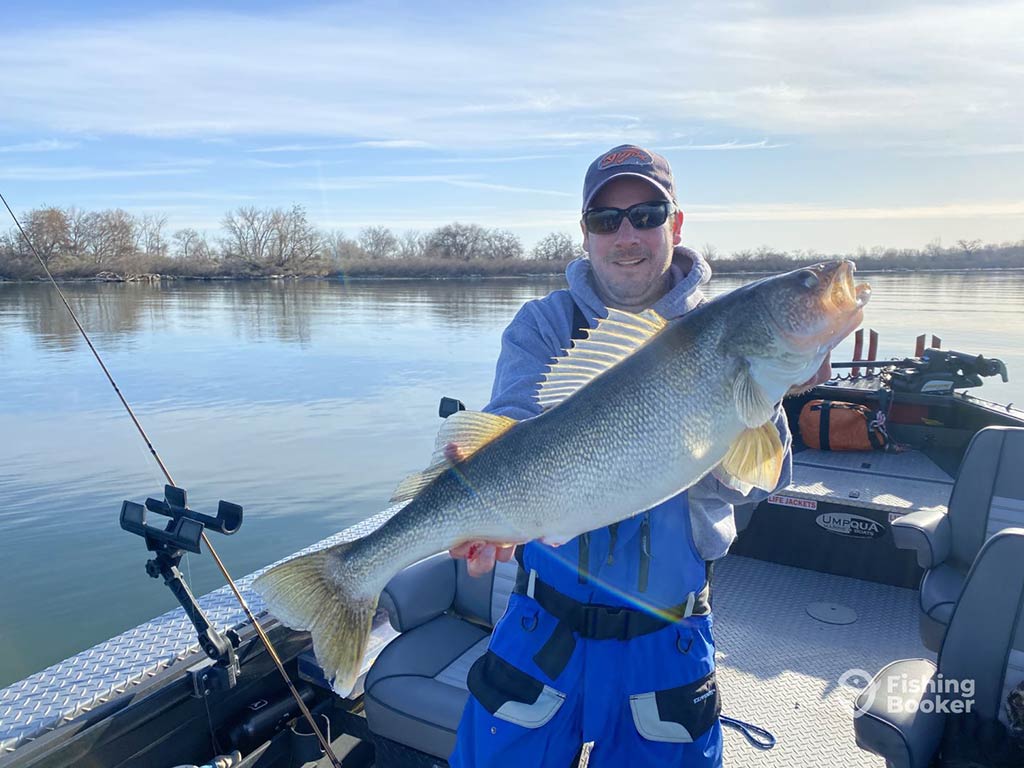
Photo courtesy of Pathfinder Sport Fishing LLC
These fish are prized almost as much for their fighting prowess as much as they are for their delicious taste. Walleye are sneaky, elusive, and a prized catch for any angler worth their salt. And the chances of catching a trophy specimen in the Columbia River aren’t exactly rare.
Walleye are like the cool, elusive kids of the Columbia River. They hang out in the deep, darker waters, avoiding the limelight. They can see well in low light, making them top-tier predators and pretty tough to catch during the day. It’s like playing hide and seek with a fish that’s a master of camouflage!
That’s why hooking a Walleye is like earning a badge of honor. It’s about outsmarting one of the most intelligent fish in the river. These fish promise a true test of your angling skills, and catching a big one is something to write home about. And, as we mentioned above, you’ll be well rewarded with some tasty fish fillets at the end of the day.
Columbia River Walleye Fishing Techniques
When it comes to landing a Walleye, it’s all about picking the right technique. We’re talking jigging – but with a twist. You’ll want to use lures that mimic the river’s natural buffet. Think soft plastics, crankbaits, and, yes, a good old nightcrawler harness.
Each aspect of your fishing selection – from the technique you choose to the tackle you equip and bait you use – plays a crucial role in determining whether your Columbia River Walleye fishing adventure ends up a success. Understanding and mastering these will not only improve your catch rate but also enhance your overall experience on the river. Let’s dive into the details:
Jigging
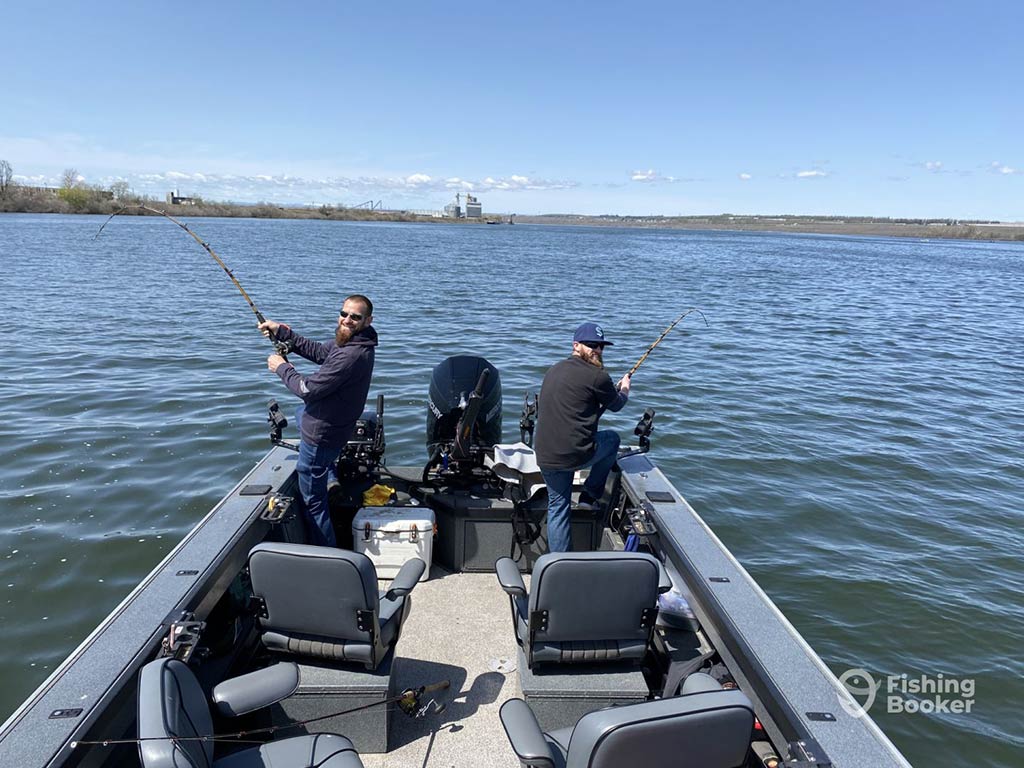
Photo courtesy of Premier Guide Service
Jigging is a method that really tests your finesse and feel as an angler. It’s particularly effective in colder waters, where Walleye tend to stick close to the river bottom. When you’re jigging, you’re essentially mimicking the movement of a Walleye’s prey to entice them.
A medium-light rod with a sensitive tip is key here, as it allows you to detect even the slightest bite. Braided lines also offer better control and sensitivity. Ideal baits for jigging include minnows and soft plastics. And here’s a pro tip: keep it close to the bottom. Walleye love playing hide and seek down there.
Trolling
This is your go-to method when you want to cover a lot of water, and is particularly effective during the warmer months. The right setup for trolling involves a longer, more robust rod, paired with a reel that can handle a heavier line for managing different depths and currents. Deep-diving crankbaits and spinner rigs are your best bets for bait.
The real art of trolling for Walleye lies in finding the right combination of speed and depth. Walleye can be particular about what they chase, so varying your approach until you hit upon the winning formula is crucial.
Bottom Bouncing
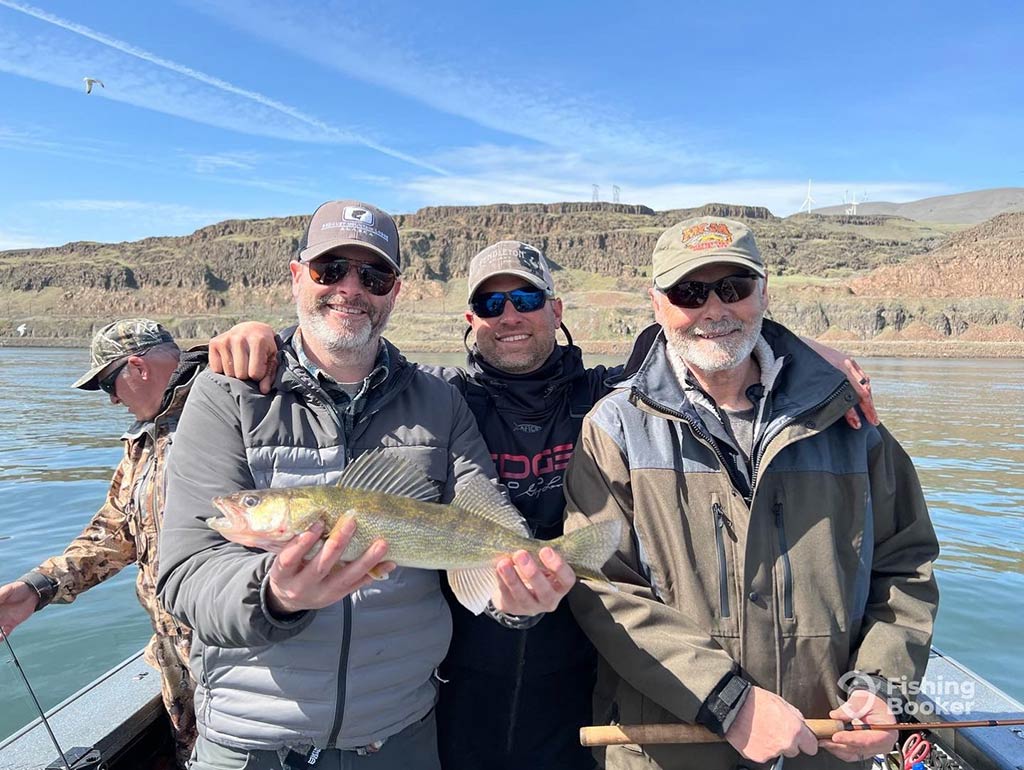
Photo courtesy of Oregon Trophy Walleye
When you’re dealing with mixed depths and currents, such as in channels or around mid-river humps, bottom bouncing becomes an invaluable technique. This method requires a rod with a bit more backbone to manage the weight and yet still feel the bite.
The idea is to keep your bait – typically something live like nightcrawlers or leeches – near the riverbed. A slow, steady retrieval to mimic the natural movement of prey is incredibly effective in luring Walleye.
Columbia River Walleye Bait & Tackle
Now, onto the hardware. A medium-light rod with just enough backbone to wrestle the fish will also help you in a number of different situations. For jigging and bottom bouncing, opt for a more sensitive setup, whereas trolling calls for sturdier gear capable of handling larger fish and stronger currents.
As for bait, you’ll also want a mixed bag. Try minnows, leeches, and – if you’re feeling adventurous – make sure to net some local delicacies. In situations where live bait isn’t practical, artificial lures like soft plastics can be effective, especially when you use them to mimic the movement and appearance of Walleye’s natural prey. The key is to understand the feeding habits of the Walleye in different conditions and choose your bait accordingly.
Columbia River Walleye Fishing Spots
You’re probably itching to know where to drop your line. While the Columbia River is vast, there are certain hotspots where you’re more likely to find these beauties…
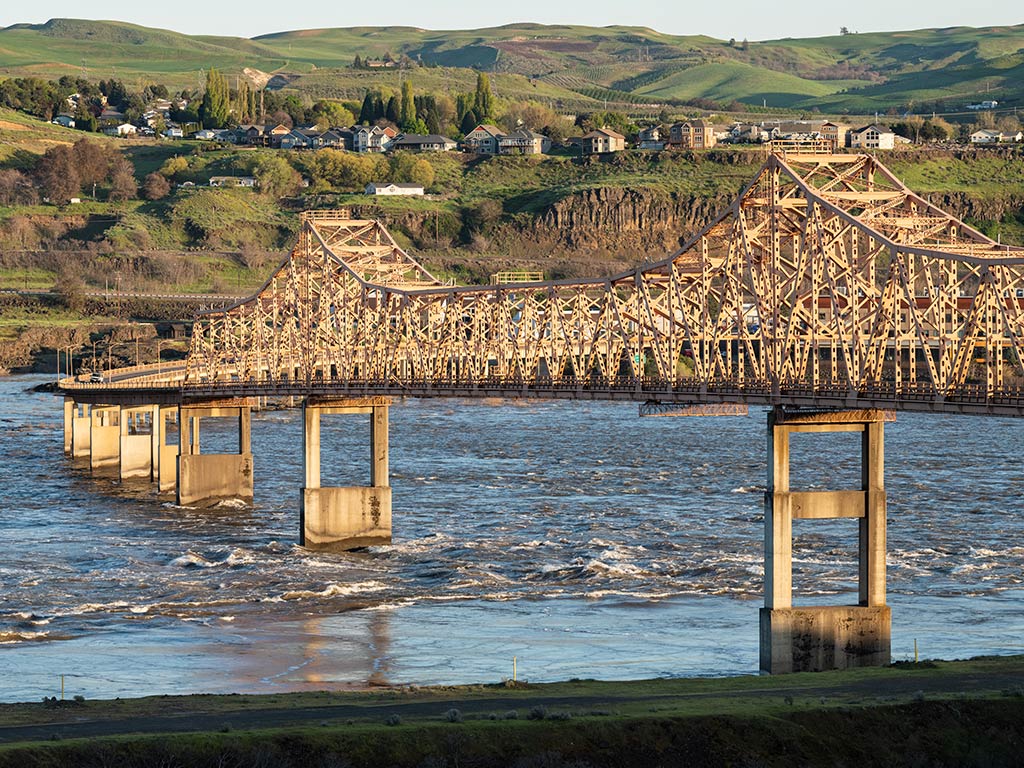
First off, let’s zoom in on some dams. McNary and John Day, for example, are prime congregating points for bait fish, with the right mix of current and depths that Walleye can’t resist. Then, there are the confluences, where tributaries meet the main river. The mix of waters brings in a variety of food, providing another feast for Walleye.
But don’t overlook the deep pools either, especially those with a bit of current. In the warmer months, Walleye head to these deeper areas to chill in the cooler waters. Here are a couple more spots to consider:
- Boardman–Irrigon Stretch. This stretch of the river in Oregon is a hotspot for anglers thanks to its slower currents and abundant food supply for Walleye.
- The Dalles Pool. Just east of The Dalles Dam, this pool is a magnet for Walleye, especially in spring. The varied underwater structure here makes for an exciting fishing experience.
- Lake Wallula (McNary Pool). This reservoir, stretching between the McNary and Ice Harbor Dams, boasts several access points from both Washington and Oregon, giving you the chance for plenty of Walleye.
- John Day Pool (Lake Umatilla). This area near the John Day Dam is known for its healthy Walleye population. The varied bottom structure here provides an excellent habitat for the fish.
- Portland and Vancouver Area. While not as famous as elsewhere for Walleye, the Columbia River near these cities can surprise anglers with some good catches, especially near the mouths of tributaries.
Columbia River Walleye Fishing Seasons
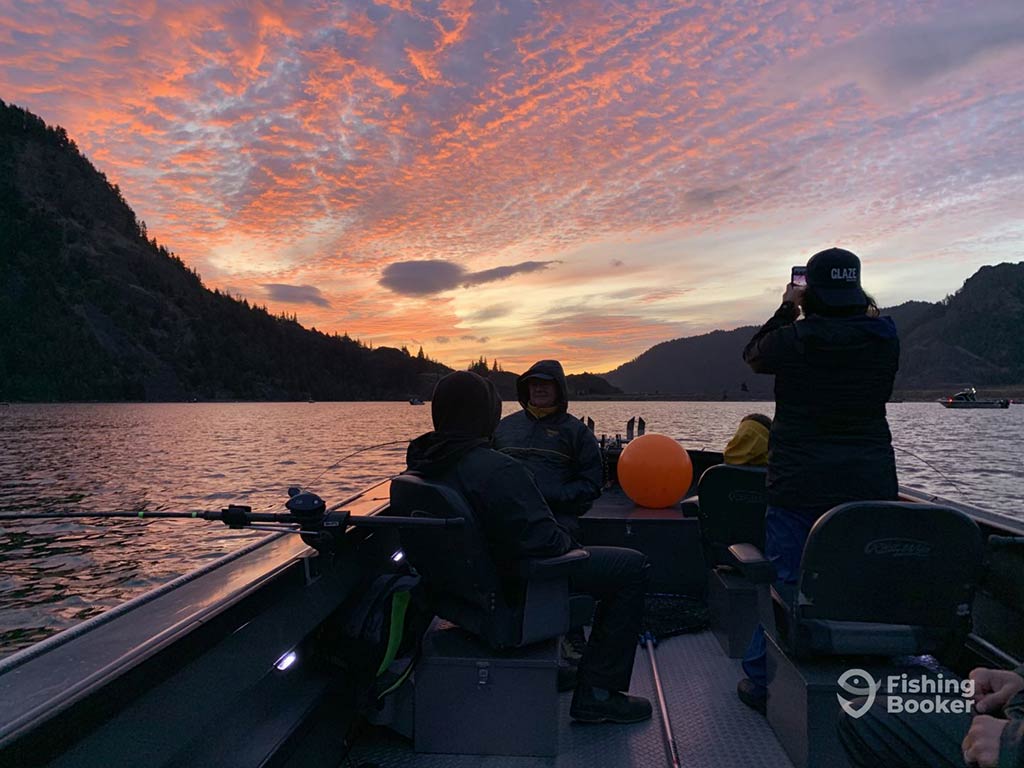
Photo courtesy of Reel Deal Fishing Adventures
Seasonality plays a big role in how you fish for Walleye on the Columbia River, as each season brings its own flavor to the fishing experience. Whenever you come, though, make sure to adapt your technique and bait to match Walleye’s behavior. They’re savvy creatures, always changing their routines with the seasons. Here are a few tips:
- Spring. As the ice thaws and water temperatures start to rise, Walleye get more active and hungry. They’ll venture into shallower waters, making this the prime time for jigging.
- Summer. When the sun’s blazing, Walleye dive deep to beat the heat. This is when you switch to trolling and bottom bouncing in the deeper channels.
- Fall. The water cooling is like a dinner bell for Walleye. They start moving back to the shallows, encouraging you to try jigging and trolling, especially around structure.
- Winter. Winter Walleye fishing is for the more patient souls among you. The fish are less active but that doesn’t mean they’re off-limits. You might need to slow down your approach, focusing on areas with warm water discharges.
Columbia River Walleye Fishing Rules

When it comes to Columbia River Walleye fishing, doing it right and respecting the rules is a must. First things first, you’re gonna need a fishing license. And don’t forget your Columbia River Basin Endorsement – it’s essential for fishing in this area.
Regulations can change faster than a Walleye’s mood, so it’s crucial to stay updated. We’re talking size limits, bag limits, and specific area regulations. Keep an eye on the rules from both Washington and Oregon concerning this sought-after creature.
Walleye Fishing in the Columbia River: Can It Get Any Better?
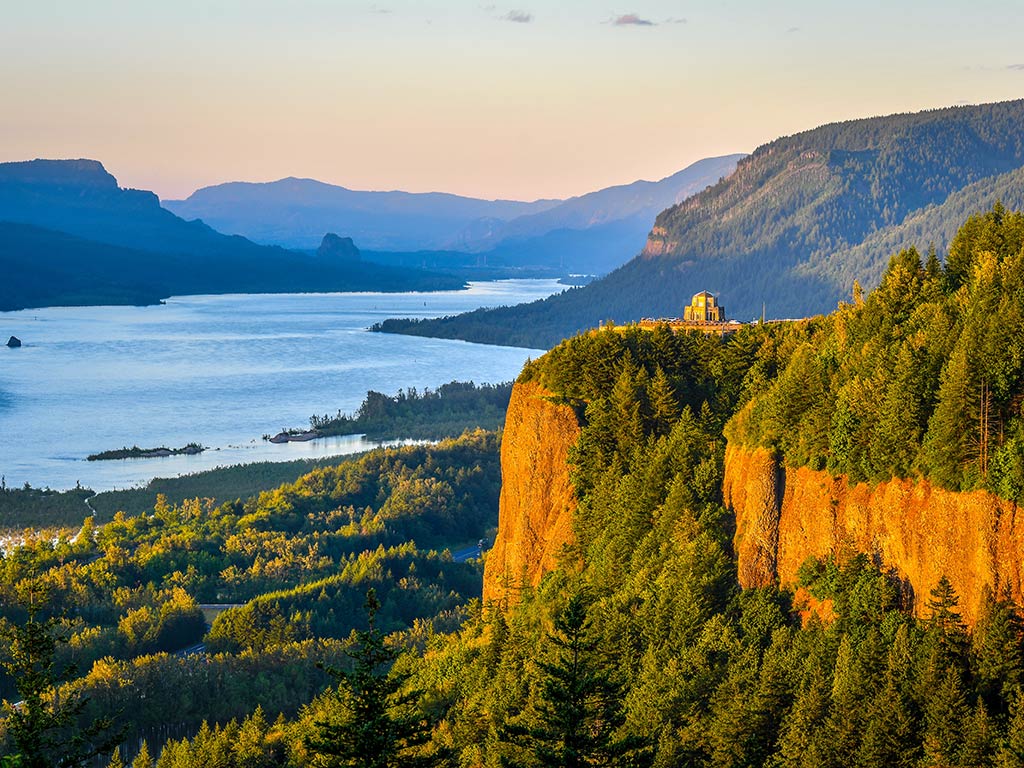
Whether you’re a seasoned pro or just dipping your toes in the water, the Columbia River gives you a real shot at landing a big one. Grab your rod, respect the rules, and get ready for a challenge. But, with the information you’ve learned here, you’re in a much better place to hook a Walleye or two. What are you waiting for? This mighty river awaits!
Have you ever been fishing for Walleye on the Columbia River? What’s your go-to technique? Do you have a favorite spot? Let us know in the comments below!
The post Columbia River Walleye Fishing: The Complete Guide for 2024 appeared first on FishingBooker Blog.
https://fishingbooker.com/blog/columbia-river-walleye/
 CampingSurvivalistHuntingFishingExploringHikingPrivacy PolicyTerms And Conditions
CampingSurvivalistHuntingFishingExploringHikingPrivacy PolicyTerms And Conditions
